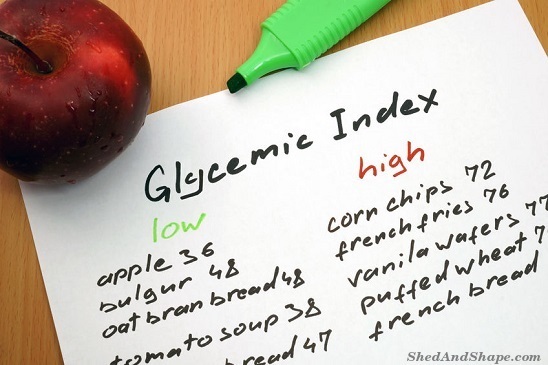Wondering if a low carb diet is low GI? If so you are not alone. A lot of people tend to confuse a low carb diet with a low GI diet. Evidence shows that a diet that consists of low GI foods is good for glycemic control and can also help to reduce the risk of chronic illnesses. On the other hand, low carb or lower carbohydrate diet does not necessarily mean eating low GI foods. You could still be eating high GI foods even when you’re on a low carb diet. Read on to find out more about this.
What is a Low GI Diet?
GI refers to the Glycemic Index, a ranking of carbohydrates in foods on a scale of 1 to 100, depending on the extent to which the foods could raise the level of blood glucose. Foods with a GI of 70 or more are considered high GI foods and these are foods that will most likely trigger an increase in the blood glucose level. A low glycemic index diet requires eating foods that have low GI level. These foods take longer for the body to absorb, which makes the person feel full longer and prevents overeating.
Low GI foods produce a less pronounced increase in the blood glucose and insulin levels. They therefore have several proven benefits for health and have been shown to reduce the blood sugar level among people with Type 1 and Type 2 diabetes. These foods also have proven benefits for weight loss.
Low GI Diet versus Low Carb Diet
Now that you understand a bit of the low glycemic index, let’s take a look at how it differs from a low carb diet:
• If you’re on a low carb diet, you need to know the carbohydrate content of the food. The carb content will not change regardless of how the food is prepared and cooked and there’s little to no difference between peeled potatoes and those with skin. On a low carb diet, potatoes are off-limits due to their high carb content, regardless of how they were cooked. Although potatoes score high in the Glycemic Index, there are ways to lower its GI and that includes eating it along with a combination of other low GI foods. Those who are following a low GI diet can still have potatoes.
• The two diets have different attitudes towards fats as well. Those following a low GI diet are advised against eating too many fats since they don’t need the calories from fat because they’re consuming more carbohydrates. However, on a low carb diet, most especially the ketogenic diet, eating plenty of healthy fats is encouraged because this is where the dieters will get their energy.
• The level of glucose in your blood depends on the combination of foods that you consume. This means that the insulin highs and lows will vary according to the food items that you’re eating at the same time. If you’re eating a few peeled potatoes in a meal along with tons of green vegetables that have a low GI, then that’s still acceptable. However, on a low carb diet, all foods that have high carbohydrate content like potatoes must be totally avoided. A low carb diet might be more restrictive than the GI diet, but it’s actually simpler for most people and a more effective approach to losing weight.
• On a GI diet, you’ll still be allowed to eat starchy but fibrous vegetables such as pumpkins, carrots, and parsnips. However, these vegetables are restricted or have to be totally avoided on a low carb ketogenic diet, especially at the beginning phase when you are trying to get into the state of ketosis.
Conclusion
A low carb diet is totally different from a low GI diet. The diet is often more restrictive and requires consuming more fats, which medical professionals would not suggest for people who are put onto a low GI diet, especially diabetics. However, if your goal is to lose weight, you might find the low carb diet more suitable than the low GI diet.
If you want to learn more about losing weight and improving your health with a low carb diet that’s easy to do then why not try the 3-Week Ketogenic Diet. It’s a simple science based diet.
Click here for the 7 day FREE trial.










